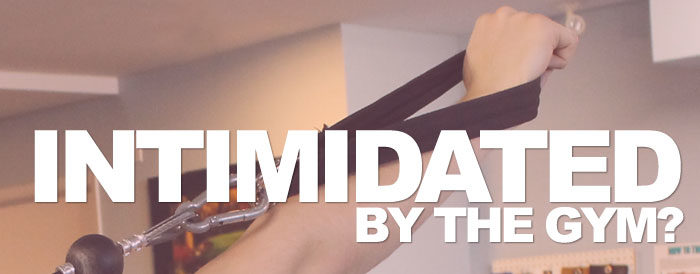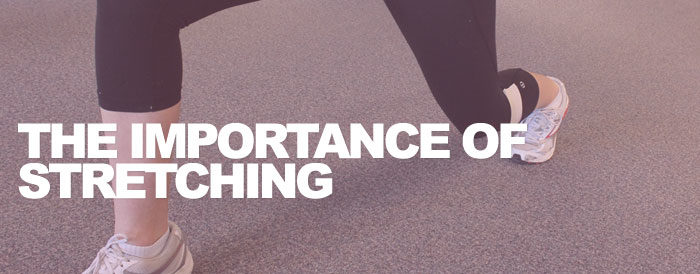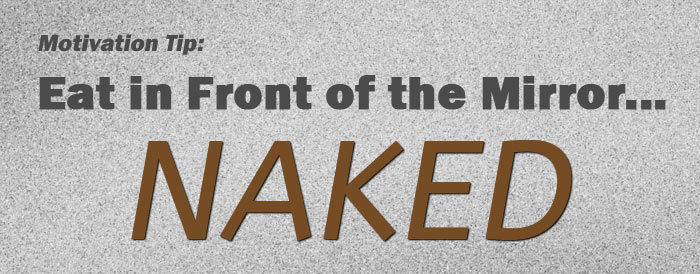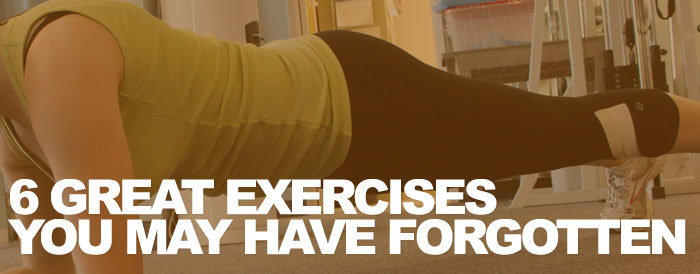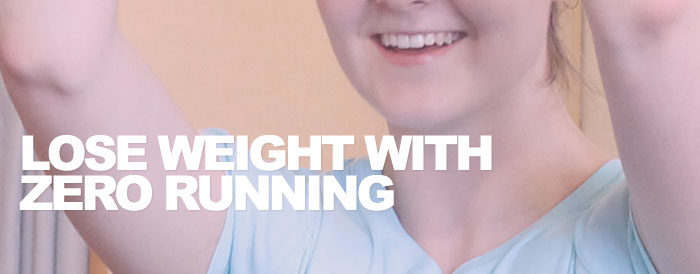Fitness & Excercise
Ready to Join a Gym but You’re Scared
Working out at a gym can be intimidating. You feel like everyone seems to know what they are doing and are already in great shape – you’re worried you’ll look like you don’t belong and maybe people will think you have no right to be there. The cavernous space is filled with mysterious equipment and people are grunting in exertion. It is all very strange and unfamiliar, making you wonder “Where do I start?” or “Will someone laugh at me if I do something wrong?”
Don’t let your fears keep you from exercising at the gym. Here are 7 tips on how to overcome gym intimidation:
1. Set Up an Orientation
Unsure of how to use the machines, or where certain equipment is located? Many gyms offer a free orientation to new members – if this option is not presented, all you have to do is ask for it. During the orientation, a staff member will show you how to properly use the equipment and this one-on-one opportunity will also be great time to ask any other questions. And remember it won’t be the only time you can ask for help…anytime you’re unsure or curious about something just ask the staff – that’s what they’re there for.
2. Find Common Ground
Start by doing something you know. Do you ride your bike a lot or go for walks/runs? Putting your knowledge and familiarity with these activities to use will help you feel more confident in what you are doing. So start your workout sessions with just the bike or treadmill, it’s okay if you don’t do anything else during your gym visits. After a few sessions in the gym environment, your confidence will grow.
3. Train with a Friend
Working out with a friend can help ease the culture shock of working out at the gym. Tap into your friend’s knowledge and ask for help with the equipment or advice on how to do a certain exercise. Chatting with your friend about these things is a great distraction from your fear and will help get you moving comfortably in the space a lot sooner.
4. Hire a Personal Trainer
Working one-on-one with a personal trainer can be helpful in learning about proper form and technique. They will create a workout plan based on your goals and designed to suit your abilities, and they can guide, coach and encourage you through it. A certified personal trainer is one way to get you on a path towards the results you want – that’s how the celebrities do it. However, if you’re dealing with a nagging injury (or pain), consult a health professional like a physiotherapist to ensure your intended workout regimen will help and not hurt you.
5. Take a Group Class
Most gyms offer a wide variety of group lessons that take the guesswork out of coming up with a fitness routine. The instructor will demonstrate the moves, tell you how many repetitions to do and provide motivation. All you need to do is show up…how easy is that?!
6. Dress Comfortably
If you don’t feel comfortable in tight or form-fitting workout clothes then don’t wear them. You want to feel comfortable, not self-conscious. Not sure what to wear? Dress for ease of movement, nothing bulky or heavy. However, given the current size of the active-wear industry, it’s pretty much a certainty that there’s a perfect outfit out there for any shape and size. Finding the right active-look can put you in the right frame of mind to exercise so go find your gear.
7. Choose Off-Peak times
It’s very frustrating when you’re trying to stick your tight schedule or you’re in a rhythm with your workout and you have to wait to use a piece of equipment at the gym. Generally, the busiest times at the gym are early morning, lunch hour and right after work. So, if it’s possible for you to schedule your workouts outside of the busy hours you’ll have a more seamless (and hopefully more enjoyable) workout. Not only will you be able to go through your routine more efficiently, you’ll also avoid any wandering eyes that are waiting in line to use the same piece of equipment you just got a hold of.
Getting used to the atmosphere at the gym can take some time but if you stay the course and maintain your commitment, the end result is a healthier you – which is worth it. So be patient with yourself and try out these tips if want to hit the gym but are struggling to get over your fear. And remember, your fear is often a liar – once you start you’ll realize all that worry was for nothing. Good luck with your journey to a healthier you.
Why Stretching Isn’t Just for the Morning
You have been lifting weights regularly for the last couple months and are beginning to notice more definition. Happy with your progress, you continue to lift and keep getting stronger. Then one day while using the squat press machine, you feel a twinge in your inner thigh. You manage to put the weights back safely but are unable to finish your workout. Wincing in pain you wonder, “What happened?”
Or maybe after a couple years away from swimming you return to the pool. The first couple of laps don’t feel as smooth as they once did. As you continue swimming you notice that your strokes are shorter and your shoulders don’t rotate as easily as they once did. As you towel off you wonder, “What happened?”
Not stretching is likely what happened in these scenarios. Stretching is often an overlooked exercise aspect due to time limitations and because it does not produce visible results. But here are some reasons to not overlook stretching again:
Maintain Flexibility
As we get older, muscles become tighter and our range of motion decreases. Being flexible is beneficial for everyday tasks and regular stretching can help keep the major joints moving freely and maintain mobility. The danger of losing flexibility is reduced mobility – as movements become harder to do, we instinctively do them less which can lead to things like not being able to stoop down, sit cross-legged comfortably, or bending down in a manner that keeps your back safe. Use it or lose it, isn’t just lip service – it’s a sad reality for many. It’s the natural course that many people follow which results in less activity and increased potential for debilitating injury.
Reduce Back Pain
Moving your body freely without limitations means movements are efficient and less painful. Regular stretching can also lead to better posture and reduced lower back pain.
Remain Injury-Free
Every time you lift weights, the muscle is contracting, breaking down and is left in a shortened state. This process leaves muscles feeling sore, tight and at risk for injury. Stretching after lifting weights is essential to reducing the risk of injury, and it can help shorten recovery time.
Improved Muscle Development
Muscles are formed by putting stress, such as resistance or weights, on them while moving through a full range of motion. However, when your range of motion is limited, the development of the muscles is affected. If you want well-developed muscles then make time for stretching.
Now that you know why stretching is important to your routine, be sure to do it correctly. Hold your stretches at the first feeling of resistance. Then breathe for at least a count of ten before releasing. Be sure to modify and adjust stretches to suit your flexibility and range of motion. Stretching is also an activity that can be done as a workout routine. If you’re not sure how, a great way to explore the power of stretching is through Yoga. Find a local studio – you can often get a free intro class (or if participating in a group is too intimidating, find a yoga instructor for a private lesson). You can also YouTube “Yoga for Beginners”. York Rehab also runs a beginner yoga class for those looking to get started.
Not sure which stretches would benefit you the most or how to tailor them to your needs? Consider booking an appointment with one of our physiotherapists who can show you how.
Motivating Yourself to Exercise
You are looking to improve your overall health and know that regular exercise can help with that. So you sign up for a gym membership and have the class schedule on your fridge. But since taking the initial tour of the gym, you haven’t gone back. You just aren’t motivated to exercise. Don’t worry, you are not alone.
Finding the motivation to exercise can be tough, especially if you don’t like exercising. Here are some tips to help find your motivation:
Pack Your Gym Bag – Pack everything you need the night before and place your bag by the front door. Prepacking your bag means you don’t have to decide in the morning whether to exercise or not. Since your bag is packed you have no excuse not to exercise or talk yourself out of going.
Schedule Your Workouts – you put everything else in your calendar why not your workout? Plan your workouts a week ahead so that the time becomes blocked in your calendar. Consider these appointments sacred “me time” and try not to cancel them for other appointments.
Get a Workout Partner – when you know you are meeting someone for a workout, you are more likely to show up because you don’t want to let them down. Having a workout partner can motivate you to put more effort into training because someone is pushing you to do more.
Try Something Completely New – doing a brand new activity will force you to be fully engaged and help keep you motivated to exercise. Whether it’s yoga, fencing, rock climbing, or something else, having an instructor guiding you can make it seem more like a learning experience instead of exercise.
Leverage Your Lifestyle – try combining your workout with an established aspect of your life. Have kids? Go for family bike rides or help coach the kid’s sports team. Have a dog? Explore Thornton Bales Conservation Area or George Richardson Park for a scenic hike or go rollerblading with your pooch. Live in a condo or apartment? Try taking the stairs instead of the elevator down to your car in the morning.
Sign-Up for a Competition – whether it is a 5k run, climbing the CN Tower or participating in a Zumba-thon, the pending event date will help keep you motivated to exercise. When you know you have a reason to train, you are more likely to make yourself exercise so that you can finish the competition.
Find an Activity You Enjoy – when we say “activity” we mean something that will allow you to at least break a sweat (so scrap-booking doesn’t qualify). It’s never too late to learn a new sport – there are many adult leagues not only for intermediate and advanced participants but also for beginners. You can learn to play soccer or hockey. Or explore running or indoor rock climbing. If you find something you enjoy, it’ll be easier to lace up your shoes and get going.
Maintaining your motivation to exercise is sometimes challenging and may not always be related to your mind set. If you want to maintain a steady schedule of activity but find it hard due to recurring pain, it might be a good idea to see a physiotherapist.
6 Great Exercises You May Have Forgotten About
Is your workout made of exercises that you have been doing for years? Do you think your physical progress is stalling? Does working out no longer get you pumped? If you nodded yes to any of these, you could be suffering from workout boredom.
By performing the same exercises over and over again, not only are you bored but your body is bored too! Which means your body is no longer being challenged and you are likely not achieving the results you want. Combat workout boredom by incorporating these six exercises into your workout routine:
1. Lunges
Changing the type of lunge you perform is an easy way to beat workout boredom because there are plenty of variations to choose from. Try lateral lunges to target the inner and outer thigh muscles. Or curtsey lunges to improve your balance and coordination. Or the Bulgarian split lunge which provides a fuller range of motion and targets the hamstring muscles.
2. Kettlebell Swings
The kettlebell swing is a full body move that works everything from your core, to your shoulders, to your legs, to your back. On top of conditioning these muscles, kettlebell swings increase your heart rate to provide an excellent cardiovascular workout with minimal impact on your lower body.
3. Single-Leg Squats
Performing single leg squats forces your body to work harder and will develop the glute and adductor muscles more so than the traditional squat. By isolating each leg in turn, you are ensuring each leg does the same amount of work and develops muscles evenly.
4. Calf Raises
Do you play basketball or volleyball and want to increase your vertical jump? Doing calf raises can help you jump higher. Not into a particular sport? Well, that doesn’t mean you don’t need to worry about your calf muscles – they provide support for your ankle and play a role in your overall balance, so be sure to include a couple of sets in your workout.
5. Plank Jacks
Holding plank is great for your core, but challenge your core even more by adding a jumping jack motion with your feet. On top of working your core, plank jacks tone your shoulders, arms, back, thighs and legs.
6. Weighted Side Bends
The oblique muscles can be one of the hardest muscles in your abdominals to strengthen, but weighted side bends target them perfectly. Not only does the side bending motion help trim your waist line which makes you look thinner, but it also engages the muscles along the spine and in the lower back to help improve your posture.
The easiest way to beat workout boredom is to perform exercises that challenge you and your body. Not sure how to perform these exercises or incorporate them into your workout? Book an appointment with one of our physiotherapists who can educate you on proper form and help you develop a customized workout plan.
These exercises are suggestions for individuals already following a regular exercise regimen. However if you experience pain while were performing any of the above exercises, please stop and consult a doctor or physiotherapist. For those recovering from injury or are currently suffering from any type of pain, please consult a doctor or physiotherapist before trying any of the above exercises.
4 Exercises to Help You Lose Weight with Zero Running
The average person believes running is the best exercises for losing weight. And while running provides a good workout, it may not be for everyone. For those that do not like running or find it difficult to do, there are other exercise options that can burn calories to help you lose weight.
So for your next workout, skip the treadmill and try:
1. Jumping Rope:
Did you know jumping rope uses more muscle groups than running, or that ten minutes of jumping rope burns the same amount of calories as running an eight-minute mile? Yup, this simple exercise is just as effective as running. Plus it challenges your endurance, balance, and coordination while adding definition to your calves and shoulders. Aim to do 10 – 20 minutes of jumping rope to reap these benefits.
2. Indoor Rock Climbing:
This fun activity combines cardiovascular exercise with resistance training and can burn up to 500 calories in just half an hour. An indoor climbing wall allows for proper skill development and confidence building since everyone climbs with the support of a harness. Thanks to rock climbing’s recent popularity, finding an indoor facility has never been easier. If you’re looking for a rock climbing option in Newmarket consider Of Rock and Chalk (note: York Rehab has no affiliation with this company nor are we endorsing it, ensure that you evaluate any fitness facility thoroughly before using to ensure the proper safety and maintenance practices are in place, qualified staff are available to assist you and that you feel comfortable in the space).
3. Rowing:
Rowing could be considered the perfect exercise because it works all the main muscles – thighs, back, abs and arms. While it is a lower impact workout compared to running, it still delivers a decent burn of up to 420 calories in half an hour. Best of all, the rowing machine at your gym will likely have no line up, so there’s no waiting to start your workout.
4. Burpees:
This classic calisthenic will get your heart rate up in a hurry while toning your arms, legs and core. Burpees are the perfect on-the-go exercise because no equipment is needed and can be done anywhere. Are you wondering how to do a burpee? No problem! Here’s how:
Stand with your feet hip-width apart, knees slightly bent. Swing both arms back and jump straight up into the air. Land softly on your toes and lower into a squat and place both hands on the floor. Jump your feet back into a plank position with your hands under your shoulders. Lower your chest down to perform a push-up. Jump both feet back in and return to starting position. Repeat. Continue to do as many reps as possible – burpees are hard work so don’t be discouraged if you can only manage a few. As your endurance develops work your way up to as many as you can in a minute.
Try including one of these activities in your existing fitness routine to keep your workouts interesting and challenge your body so you continue to lose weight. Haven’t exercised in a while or never tried these exercises? Remember to check with a physiotherapist or physician before beginning a new exercise routine.

